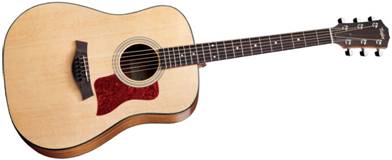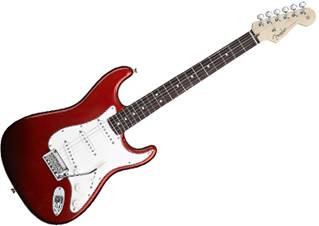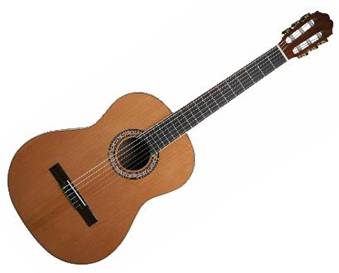If you have not yet purchased a guitar or have already done so but are not be sure if you have made the right choice, this guide should help.
Guitars come in all shapes and sizes and are produced by many different manufacturers so choosing one can seem a little intimidating at first. The wealth of choices and price ranges alone can make it a daunting task. Let’s first simplify things by breaking it down to the general categories of guitars. As an overall rule there are three basic styles of guitars. Acoustic, electric and classical.
Acoustic Guitars are also known as box, folk or hollow body guitars. They are constructed of wood and normally have a sound hole cut into the top. An acoustic guitar produces sound naturally and does not require the use of amplification to be heard (unless played in a band setting). They typically use “bronze wound” guitar strings and can be strummed with a pick or played finger style. These are by far the most common guitars played by beginning students due to the availability of lesser expensive models and ease of use and transportation.
top. An acoustic guitar produces sound naturally and does not require the use of amplification to be heard (unless played in a band setting). They typically use “bronze wound” guitar strings and can be strummed with a pick or played finger style. These are by far the most common guitars played by beginning students due to the availability of lesser expensive models and ease of use and transportation.
Electric Guitars are, for the most part, solid body instruments and are wired with “pickups” that magnetically reproduce the sound. As a result, an  electric guitar typically requires the use of an amplifier to be heard. An electric guitar normally uses “nickel wound” strings that are usually lighter in gauge than acoustic guitar strings thereby making the electric guitar easier to play. There are good models available at an affordable price but one must also purchase an amplifier to go along with it. Electric guitars are often preferred by players interested in playing rock, blues, metal and lead country styles.
electric guitar typically requires the use of an amplifier to be heard. An electric guitar normally uses “nickel wound” strings that are usually lighter in gauge than acoustic guitar strings thereby making the electric guitar easier to play. There are good models available at an affordable price but one must also purchase an amplifier to go along with it. Electric guitars are often preferred by players interested in playing rock, blues, metal and lead country styles.
Classical Guitars are similar to acoustic guitars in that they are of a hollow body design and, as a result, do not require the use of an amplifier. They typically use nylon strings which produce a more mellow tone than an acoustic guitar, and tend to have a wider neck, which make them more conducive to a finger style type of playing. They can be easily identified by the “slotted” headstock and slightly smaller body. Classical Guitars are favored by guitarists pursuing classical and flamenco music and are the common choice for students in college guitar programs. We would not recommend this guitar to students interested in playing rock, blues or country music that requires strumming or the use of a pick.
programs. We would not recommend this guitar to students interested in playing rock, blues or country music that requires strumming or the use of a pick.
Your choice of guitar is, of course, ultimately up to you and according to what your preferences are. Although the acoustic guitar is the choice of many just starting out, if you know for sure that your goal is to play lead guitar in a rock or blues band then the electric might be a better pick. The classical guitar may not be your final choice but if you have access to one in the early days you will find that the nylon strings are easier on the fingers until you develop your calluses.
At the end of the day the important thing is that you get a guitar that meets your musical goals, budget and that you are comfortable with. Many veteran guitarists have several guitars in their arsenal and I can personally attest to that. I have acoustics, electrics and classical guitars and I play them all according to what type of gig or venue I am playing. If you play guitar for any length of time you will probably accumulate several yourself.
It’s great to save some money in the beginning but try to find a happy medium between thrift and quality. I have seen students who buy a cheap guitar starting out and end up losing interest in playing because they purchased an inexpensive model. These can often be poorly constructed and much more difficult to play. Many of the guitars that are sold at the “big box” discount stores fall into this category. Our recommendation would be to go to your local music store where you can actually “lay hands” on various models.
I know you can save a few dollars buying a guitar online but guitars, by nature, are fickle, and each one plays a little differently, each tends to have it’s own personality. As a result, there is no substitute for picking one out that you can touch and play at a music store with the help of a trained pro.



